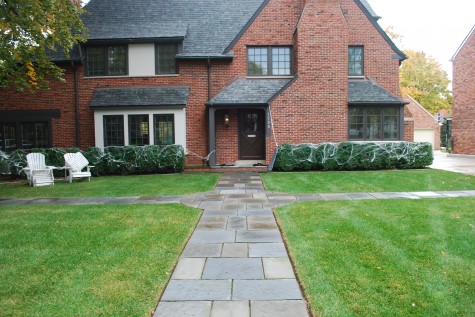Designing, planting and tending a landscape or garden is an avocation, a profession, a passion -and a nemesis of the most unpredictable and formidable sort. The pure joy that a great garden has to give back has a substantial responsibility that comes along with it. The landscape could be described as the responsibility for the health and happiness for a flock of living things. A lot of marbles have to be kept on the table-all at the same time. Every plant that dies on my watch-I take it very personally. Plants die routinely, and with astonishing regularity-in spite of knowledge and experience.
Some plants die from old age-every living thing has a lifespan. Some things die from a particularly fierce winter, or relentless rain, or extraordinary heat. Some things die from lack of water-of these deaths, I am particularly ashamed. Some things die from poor siting, or a a site whose ecology changes drastically-as in the loss of an old mature tree. The living community that describes my garden is ephemeral-fleeting. No tree, shrub, perennial, or garden experience comes with a lifetime guarantee. Should you decide to garden, the disappointments are part and parcel of the experience. Fortunately, a landscape has other elements that live longer.
Some elements in my landscape shrug off the water, the winter, the heat; the stone in my garden is the next best thing to indestructible. Stone persists in my landscape in spite of my neglect, poor science, or ignorance. What can I count on to be there every day, as best as I could count on anything? The stone stairs to my rose garden have been there as long as I have had my garden. I would guess it will still be there, when I celebrate my 100th birthday.
Stone in the landscape roughly refers to what we call hardscape. Stone beautifully populates those places to be, that soil to be retained, those spaces to entertain, and those walks with a natural material that provides an enduring hard surface. Stone is eminently capable of expressing your need for a change of grade. Stone provides paths and walks that enables travel from one space to another. Stone provides a beautiful and durable surface for a terrace. Compacted decomposed granite- shards 3/8 inch in diameter and smaller- makes level and hard surfaces that survive in driveways and garden paths, year after year. I so like balancing those living, and therefore fragile elements in a landscape with a crispy defined highly textural natural material that endures.
I am not a geologist-I am a gardener. But I can say with great conviction that the stone readily available to me regionally is always my stone of choice. Regional stone that is native to Michigan will look like it belongs in a Michigan garden. Stone native to the East coast, or west coast I can appreciate, but a sense of authenticity of place is important in making a landscape visually believable. No doubt an entire library exists which describes the color, texture and use of stone world wide. But I am primarily interested in stone that naturally occurs in my region of the country. In addition to bluestone and granite, Indiana limestone, and Valders stone from Wisconsin are favorites.
The fountain in my back yard is finished in Valders stone. The step down in submerged in water the entire season. This very high density dolomitic limestone is prized for its low water absorption. This makes it ideal for applications in or around water. Indiana limestone, also known as Bedford limestone, is principally comprised of calcium carbonate. The decomposition of marine animals at the bottom of the inland sea that covered the Midwest for countless centuries created limestone. The limestone quarried near Bloomington Indiana is acknowledged to be the highest quality limestone in the United States. It readily absorbs water; the limestone caps on my retaining walls have aged beautifully.
Should you need a hard and enduring surface or wall, natural and native stone will endow your garden with a sense of permanence. The formation of stone takes generations, and it will take generations to decompose. Do not be shy about inviting a natural element into your garden with proven longevity. It provides a quiet and appropriately natural foil for your plants.
I was a rock collector, as a kid. Every type of rock, every shape, every surface-I was enchanted. Nothing has much changed; I have a big love for all manner of rock. Stone carpeting the ground, stacked up like a wall, hand carved into a cistern, or half buried in a rock garden-I value it all. The stone slabs carpeting this conservatory floor-I have never seen anything remotely like it before. It has an exotic, architectural, and other-worldly look.
Stone cold, set in stone, stone faced, hard as stone -these are all phrases that describe a certain attitude that withstands the elements, the vagaries of nature, and popular sentiment. Stone comes with an aura of history about it. The eldest plant in my garden I estimate to be about 80 years old-a trifling age, compared to my stone. Relationships in a composition might be more important than the one, or the other. How an ephemral element interacts with a permanent element-always interesting. That great age one associates with natural stone has much to do with the creation of, and value, of stone garden ornament.
Stone ornament for the garden is a centuries old art and practice. A material which is virtually impervious and certainly accepting of the weather makes an ideal medium for sculpture, urns, finals, cisterns, plinths, and benches. Many antique pieces provides homes to thriving colonies of moss and lichens. Before Michaelangelo’s David was a sculpture, it was an ancient block of marble from the earth. Antique containers and urns hand carved from a single piece of stone are rare, and very costly. Dry cast limestone is a dry mix of cement, sand, mineral pigments and crushed natural stone, which is forced into molds, and vibrated under pressure until it fills the mold evenly. This method of manufacture makes stone garden ornament more readily available and affordable.
The stone in my garden is beginning to settle in. Plants have decided to take up residence in its crevices, and on its surface. I like how this makes me feel. This Belgian bluestone table with antique hand-carved corbel bases would indeed be lovely in a garden. Any gardener who has ever carried rocks around their garden, or had their fingers pinched setting a stepping stone knows that stone does not give. I like a material in my garden with this attitude.
I wrote this essay in a special capacity. I was so pleased that The Garden Designers Roundtable invited me to guest post with their group for the month of May. The Roundtable is a group of garden and landscape designers who write regularly on topics related to landscape design. This blog is a great read. www.gdrt.blogspot.com. Interested in an ongoing discussion of plants, gardens, landscapes and design? www.facebook.com/GardenDesignersRoundtable.
To read all of the posts on the May discussion of stone in the landscape, click on the links below. Enjoy!
Sunny Wieler : Stone Art Blog : West Cork, Ireland
Debbie Roberts : A Garden of Possibilities : Stamford, CT
Douglas Owens-Pike : Energyscapes : Minneapolis, MN
Ivette Soler : The Germinatrix : Los Angeles, CA
Jenny Peterson : J Peterson Garden Design : Austin TX
Rochelle Greayer : Studio G : Boston, MA
Scott Hokunson : Blue Heron Landscapes : Granby, CT
Susan Cohan : Miss Rumphius’ Rules : Chatham, NJ
Tara Dillard : Vanishing Threshold : Atlanta, GA
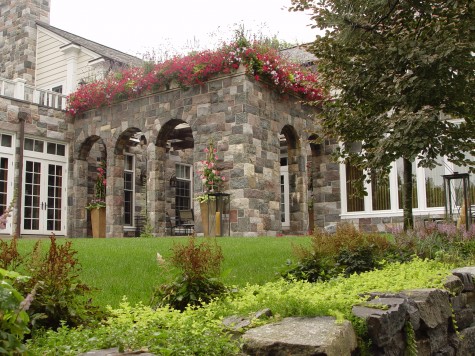

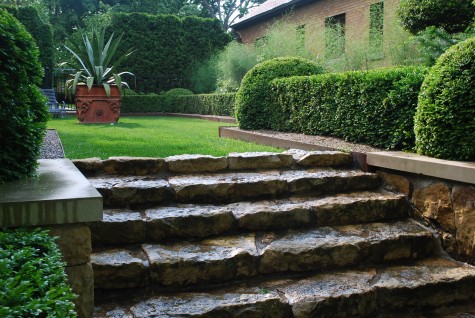
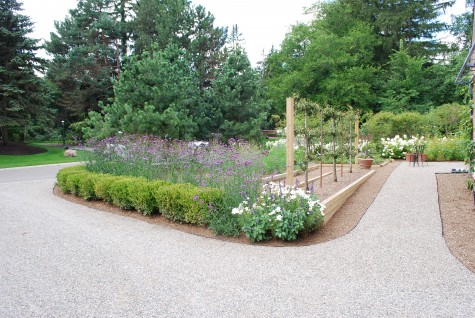
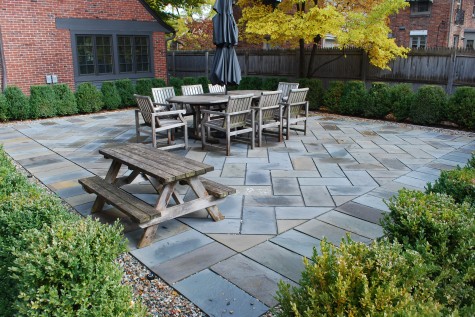

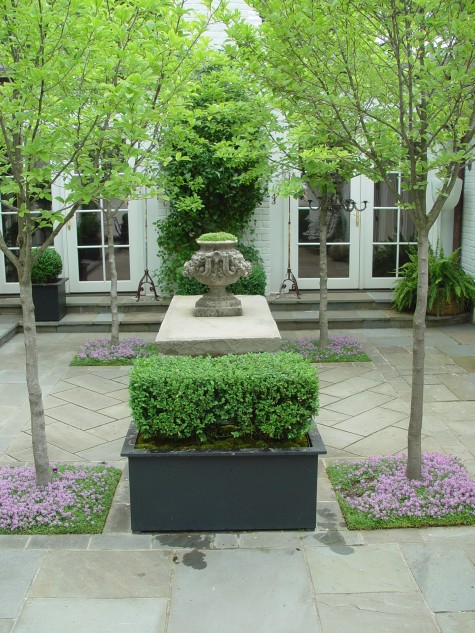
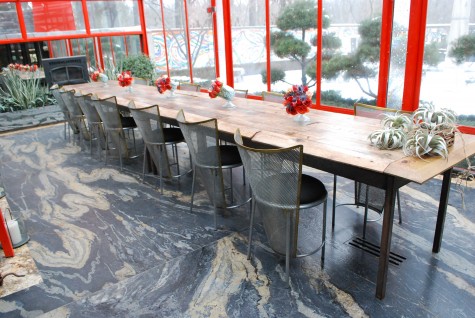

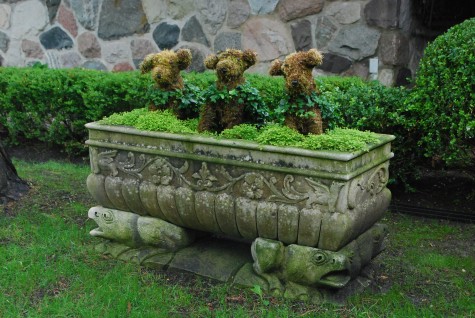
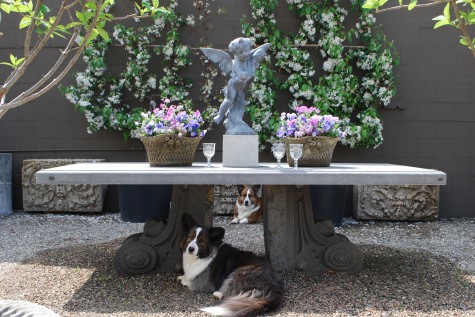
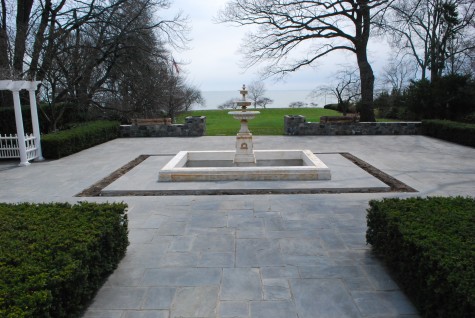
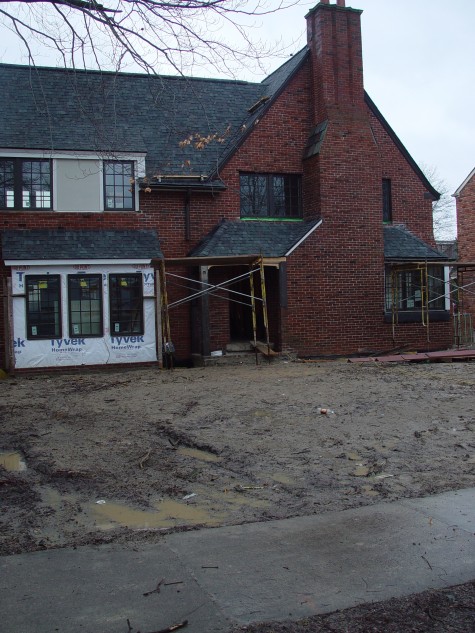 This lovely home in a local neighborhood was in sore need of updating, and needed additional space to house a young family with children. The addition was in progress the first time I saw the house. On this miserably wet and cold March day, the prospects for the outdoors did not look promising. Contractors had driven machines over every inch of land they owned. Water was sitting on the surface of the soil everywhere. It seemed like every move my clients made uncovered a new problem requiring attention. When a house is under major renovation, the landscape is last in line-as it needs to be.
This lovely home in a local neighborhood was in sore need of updating, and needed additional space to house a young family with children. The addition was in progress the first time I saw the house. On this miserably wet and cold March day, the prospects for the outdoors did not look promising. Contractors had driven machines over every inch of land they owned. Water was sitting on the surface of the soil everywhere. It seemed like every move my clients made uncovered a new problem requiring attention. When a house is under major renovation, the landscape is last in line-as it needs to be. 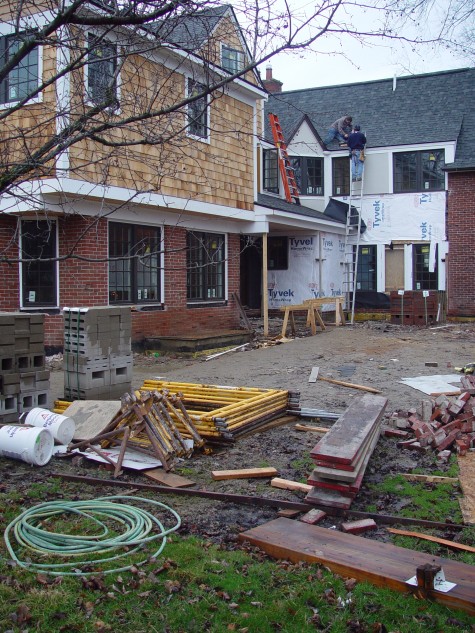 It wouldn’t be possible to install a landscape at this point. Some years ago the New York Times ran a feature about landscape costs-the thrust of which was that it can, and frequently does take as much money to build and furnish a landscape as a house. I don’t know that I would go that far, but a landscape is a considerable investment. Though property values have been under siege in our area of late, it is still true that for most people, their home will be the biggest investment they ever make-for better, or for worse. Thus I have no problem recommending to a young family that they invest such that fifteen years later, should they decide to move, a landscape that is in place will make that home they want to sell look settled, finished- irresistible.
It wouldn’t be possible to install a landscape at this point. Some years ago the New York Times ran a feature about landscape costs-the thrust of which was that it can, and frequently does take as much money to build and furnish a landscape as a house. I don’t know that I would go that far, but a landscape is a considerable investment. Though property values have been under siege in our area of late, it is still true that for most people, their home will be the biggest investment they ever make-for better, or for worse. Thus I have no problem recommending to a young family that they invest such that fifteen years later, should they decide to move, a landscape that is in place will make that home they want to sell look settled, finished- irresistible. 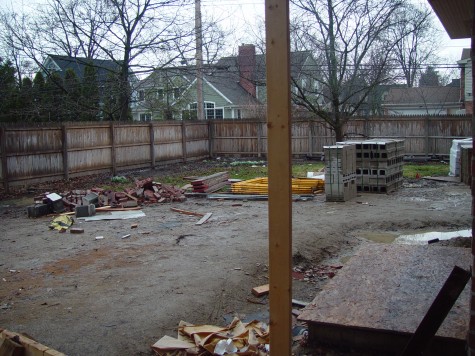 Some very important investments in a landscape are not fun. This property was the lowest property in the neighborhood, and water would stand and not drain for weeks after a heavy rain. The regrading and drainage work necessary to correct this problem was very expensive, and not so satisfying. It was about as much fun as buying a new hot water heater. I have seen many landscapes, installed both by home owners, and professional landscape contractors, where drainage issues were not addressed. The plant material is struggling, dying or dead from the lack of an investment in the drainage. For the sake of the future, some things cannot be skipped over.
Some very important investments in a landscape are not fun. This property was the lowest property in the neighborhood, and water would stand and not drain for weeks after a heavy rain. The regrading and drainage work necessary to correct this problem was very expensive, and not so satisfying. It was about as much fun as buying a new hot water heater. I have seen many landscapes, installed both by home owners, and professional landscape contractors, where drainage issues were not addressed. The plant material is struggling, dying or dead from the lack of an investment in the drainage. For the sake of the future, some things cannot be skipped over.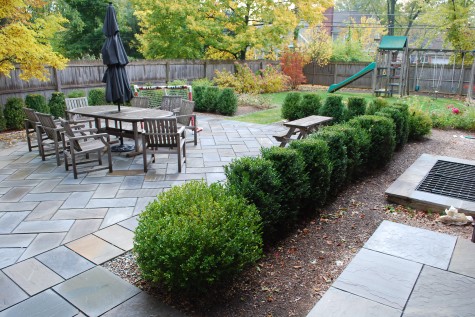 These clients knew they wanted stone for their terrace and walkways. Bluestone is a gorgeous natural stone that gives a space a solid and serious look. They also wanted their stone wet set in mortar. Mortaring stone to a concrete substrate insures a level surface that presumably does not move, or require maintenance. I say this with one caveat; the winters in Michigan will heave up just about anything. I made sure the installation was expert.
These clients knew they wanted stone for their terrace and walkways. Bluestone is a gorgeous natural stone that gives a space a solid and serious look. They also wanted their stone wet set in mortar. Mortaring stone to a concrete substrate insures a level surface that presumably does not move, or require maintenance. I say this with one caveat; the winters in Michigan will heave up just about anything. I made sure the installation was expert. Their decision was to stage the installation of the landscape such that they could have their mortared stone. The first year, their yard consisted of stone, and lawn. Year two saw the boxwood installed in the rear, and the yews in the front. This year, some of the garden. Next year, the yews designed to back up the boxwood here, and maybe an arbor. I do admire their willingness to wait, in order to have the landscape they wanted. Get a plan, pick a part to install you can handle, do it, and proceed again when time and money permits. This seems like such a logical and good way to proceed.
Their decision was to stage the installation of the landscape such that they could have their mortared stone. The first year, their yard consisted of stone, and lawn. Year two saw the boxwood installed in the rear, and the yews in the front. This year, some of the garden. Next year, the yews designed to back up the boxwood here, and maybe an arbor. I do admire their willingness to wait, in order to have the landscape they wanted. Get a plan, pick a part to install you can handle, do it, and proceed again when time and money permits. This seems like such a logical and good way to proceed. 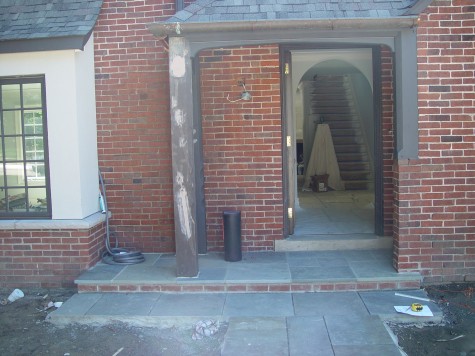 The front porch, originally only inches wider than the front door, was redone. The new porch absorbed an awkward space between the original stoop, and the adjacent bay window. Four years later, with the exception of one stone that is shaling probably from salt damage, the stonework is beautifully intact.
The front porch, originally only inches wider than the front door, was redone. The new porch absorbed an awkward space between the original stoop, and the adjacent bay window. Four years later, with the exception of one stone that is shaling probably from salt damage, the stonework is beautifully intact.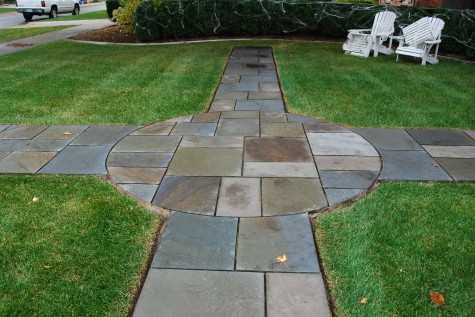 The front walkways from the drive and streetside meet in a circular stone landing midway to the door. Perhaps there will be a sundial someday, or a sculpture, or a high school graduation picture being taken.
The front walkways from the drive and streetside meet in a circular stone landing midway to the door. Perhaps there will be a sundial someday, or a sculpture, or a high school graduation picture being taken.